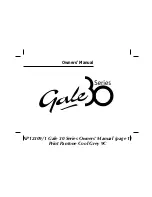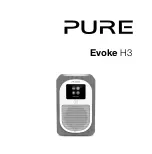
Compression Guide Technology - History - Continued
For example, with a bass guitar, you can feel the pick of the string along with the bass note.
With a kick drum, you could hear the wrap of the mallet against the skin of the drum and your
body felt the impact. However, with conventional speakers all you’d hear was an ill-defined
boom. Back then, the only speakers that seemed to get it right were the big, bulky and expen-
sive transmission-line systems., mostly from England.
We needed to know why there was a disparity between live bass and that reproduced by
speakers. After some research, it became apparent that the problem was due to the way the
woofer was tuned in the enclosure. As was the case then, just as it is now, 2 tuning methods
were used by most speaker companies. In one method the cabinet was completely sealed and
is called acoustic suspension or air suspension. In the other method, the cabinet had a calcu-
lated opening called a vent or port. The length, width and height of the port was designed to
reinforce bass at the lowest frequencies.
The problem with both of these methods is that they rely on system resonance to properly
load the woofer. System resonance acts like a spring in that once the note stops, the woofer
cone wants to continue vibrating. This results in what we call overhang and results in muddy
bass. We spent years trying to lessen the effects of system resonance. Eventually, we found
the solution and the results were dramatic. We call it Compression Guide and it was a method
of dividing the inside of the speaker enclosure into areas of compression and expansion. As
the sound wave passed through these areas, the effects of resonance were greatly reduced.
We discovered that Compression Guide also paid huge dividends in the midrange and treble
as well. Bookshelf speakers tuned by Compression Guide exhibited much cleaner and trans-
parent sound with both vocals and music. In comparison, other bookshelf speakers sounded
“boxy”. Compression Guide also helped the speakers to image more accurately.
Standard Enclosure
Compression Guide Enclosure
3




































